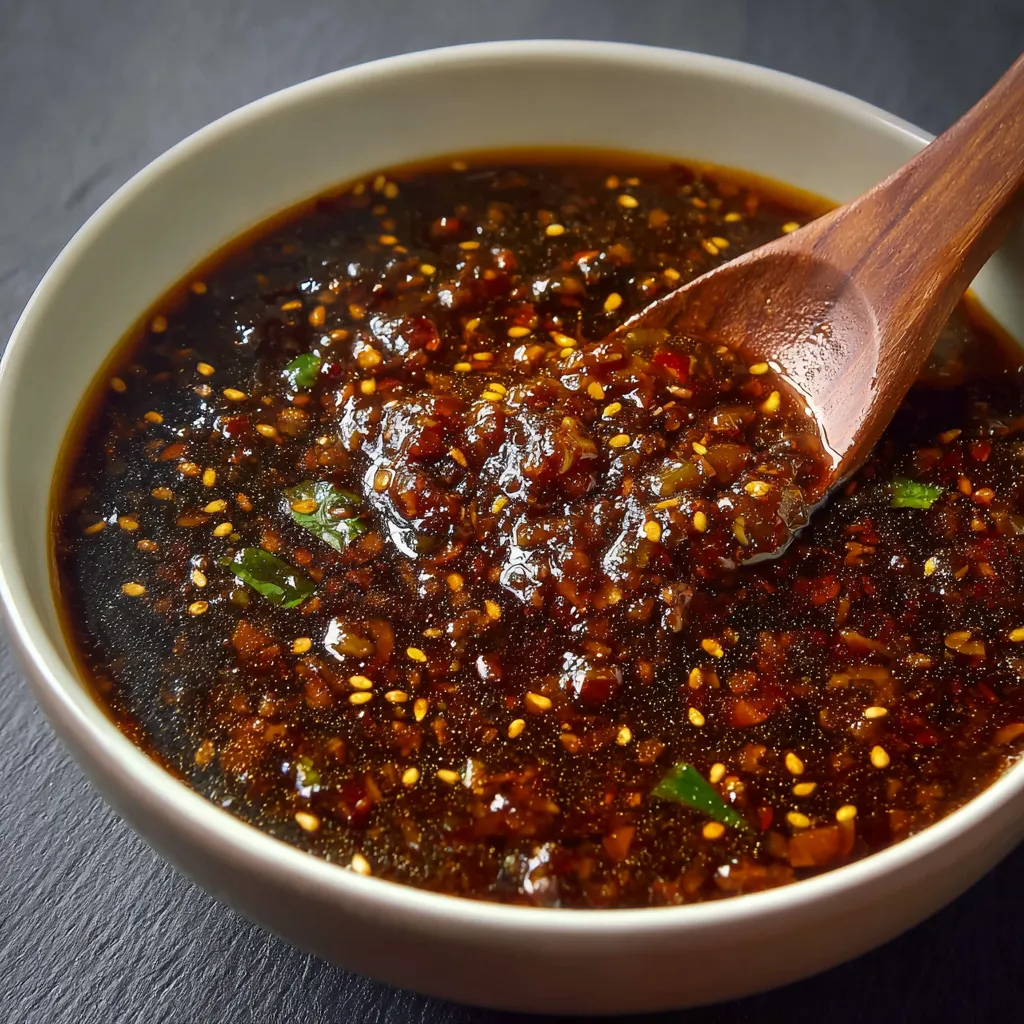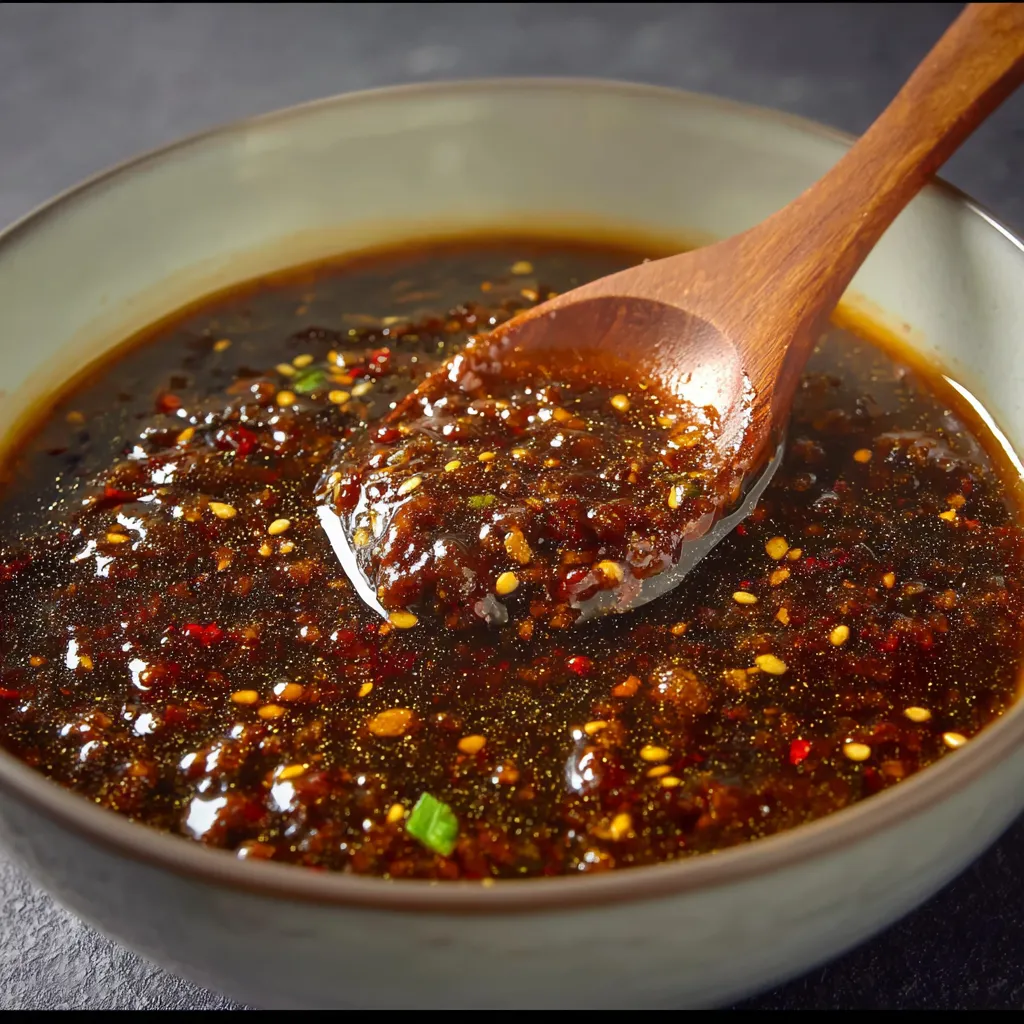 Pin it
Pin it
Bulgogi sauce is the heart of Korea’s most beloved barbecue dish, lending sweet heat and umami to grilled meats or veggie stir fries. When I first learned to make it from scratch, I realized how simple it was to create restaurant flavor at home that instantly upgrades any meal. With this easy recipe, you will have a jar of bold homemade bulgogi sauce quicker than you might think.
The first time I served this sauce at a family cookout, everyone asked what made the meat so fragrant and addictive. Now I keep a batch in the fridge for last minute weeknight grilling.
Ingredients
- Soy sauce: Brings salty depth and makes up the backbone of classic bulgogi sauce. Look for naturally brewed soy sauce with no artificial color
- Gochujang: Korean fermented chili paste adds gentle warmth and a subtle tang that is hard to replicate. Choose a brand that lists rice and pepper paste high on the ingredient list for best flavor
- Rice wine vinegar: Gives a delicate tartness that balances the sauce’s richness
- Sesame oil: Provides a nutty aroma that unlocks authentic Korean taste. Pick pure toasted sesame oil for maximum fragrance
- Honey or brown sugar: Round out the taste with sweetness that helps meat caramelize on heat. Raw honey has especially rich flavor
- Fresh ginger: Offers brightness and slight bite. Choose plump pieces without wrinkles for juicier ginger
- Garlic: Minced fresh garlic infuses irresistible aroma. Firm cloves with tight skins give strongest punch
- Red pepper flakes: Amp up the heat. Use Korean gochugaru if you can for vivid color and mildly sweet burn
- Black pepper: Seasons the sauce for good measure
- Spicy red pepper (optional): Truly turns up the boldness for spice lovers. Look for a shiny skin and full color
Step-by-Step Instructions
- Make the Sauce:
- Whisk all soy sauce gochujang rice wine vinegar sesame oil honey ginger garlic red pepper flakes black pepper and spicy red pepper in a bowl until well blended and smooth. Make sure the chili paste is completely dissolved for an even consistency throughout the sauce
- Marinate the Meat:
- Pour the bulgogi sauce over strips of steak chicken or pork in a shallow dish. Toss thoroughly so each piece is coated then cover and refrigerate for at least thirty minutes. Marinating overnight gives a big boost to both tenderness and depth of flavor
- Cook the Meat:
- Heat a grill or skillet over medium-high. Add the marinated meat strips in a single layer and cook for about five to six minutes stirring or flipping with tongs so all sides sear evenly. The sugars in the sauce should caramelize and create a shiny glaze while the meat cooks through
- Finish and Serve:
- Transfer cooked meat to a platter. For extra flair sprinkle with chopped green onions minced peppers and toasted sesame seeds right before serving. This dish is most delicious straight from the grill while warm and fragrant
 Pin it
Pin it
I am obsessed with gochujang for its subtle heat and complexity. Every time I open the jar to make bulgogi sauce I remember our family trip to Seoul eating street food under twinkling lights.
Storage Tips
Bulgogi sauce keeps in an airtight jar for up to one week in the fridge. Freezing small portions in ice cube trays lets you pull out just enough for tonight’s dinner. Always use a clean spoon to avoid introducing moisture or germs that might shorten shelf life.
Ingredient Substitutions
Tamari can stand in for soy sauce if you need to go gluten free. Maple syrup may swap in for honey and sambal oelek gives a slightly different chili flavor in place of gochujang if that is what is in your pantry. Lemon juice works for rice vinegar in a pinch.
Serving Suggestions
This sauce is always a hit with thinly sliced ribeye on a bed of steamed rice but do not overlook its magic on grilled portobello mushrooms or broccoli florets. For a fun party twist set up a DIY bulgogi taco bar with lettuce cups kimchi and rice and let guests pile on their toppings.
Cultural and Historical Context
Bulgogi translates to fire meat in Korean and has been a culinary centerpiece for centuries. The sauce’s signature blend of soy sweetness chili and toasted sesame speaks to Korea’s long love affair with fermented flavors. Beyond barbecue tables you will find versions trickling into everything from noodle dishes to fusion tacos worldwide.
 Pin it
Pin it
With this recipe in your meal rotation, you will always have a quick ticket to the bold, vibrant flavors of Korean cuisine without leaving home.
Frequently Asked Questions
- → What proteins pair best with this bulgogi sauce?
This sauce complements beef, chicken, or pork, enhancing tenderness and adding robust spicy-sweet notes.
- → How spicy is the bulgogi sauce?
The sauce has moderate heat from gochujang and red pepper flakes. For a milder taste, reduce these ingredients.
- → Can I use store-bought gochujang substitutes?
Authentic gochujang is recommended for the unique depth, but mild chili paste can be used if necessary.
- → How long should meat marinate in the sauce?
Marinate meat for at least 30 minutes, or overnight for maximum flavor absorption and tenderness.
- → Can the sauce be used as a dip?
Yes, it serves as a bold dipping sauce for dumplings, grilled vegetables, or steamed rice bowls.
